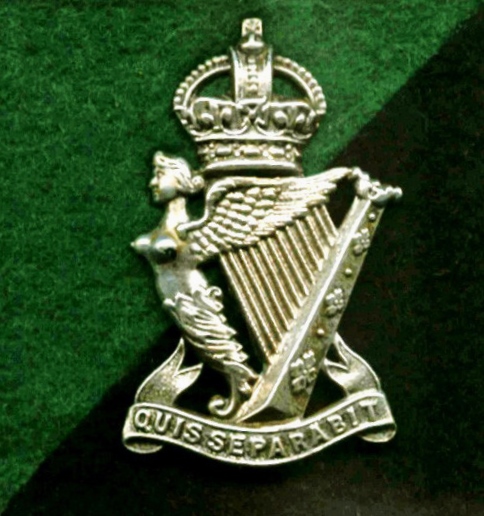TROARN - 2 RUR

The Battle Honour TROARN was awarded to The Royal Ulster Rifles for 2 RUR's actions as part of the 3rd Infantry Division's task to capture ground to protect VIII Corp's flanks. When 2 RUR had advanced on Troarn the Battalion was met with firm resistance, there were many casualties, and the advance was held up before Troarn. They were relieved in the line after being in continuous contact with the enemy since D Day. The Royal Ulster Rifles did not select the distinction for emblazoning on badges and accoutrements, including the regimental honours worn on an officer's cross belt.
Arriving near Troarn after last light, positions were dug during the night. The Battalion did not advance the following morning and would in fact remain in their positions for the next ten days until relieved in place. Since landing on D Day, this was the most static period in contact with the enemy the Battalion had experienced. During the first three days, continuous rain checked the advance of the Armoured Divisions on the Battalion’s right.
In most places, the soil prevented the water from draining away and many Riflemen were loath to leave their slit trenches, yet reluctant to remain in them because their positions was so wet and damp. The experience was similar to the static period at Cambes Wood and the ground near Troarn consisted of close country with thick hedges and woods impeding observation of more than 200 yards at any point. But the German fix on 2 RUR’s concentrated positions, many in open fields, improved with time and resulted in intense and accurate indirect fire. The Germans were also deploying, for the first time in 2 RUR’s experience, the multi-barrelled Nebelwerfer mortar, known to the Riflemen as ‘Moaning Minnie’ because its 20-second missile flight produced a wail or whine that became louder and more menacing as it approached impact. However, casualties were lighter than at Cambes Wood because the Riflemen had learned the importance of digging in and constructing protective trenches.
When the rain stopped and roads dried out, vehicles raising dust were targeted by German OPs. This indirectly threatened the Regimental (medical) Aid Post, the mortar platoon, and the Fighting Echelon vehicles, all sited in and around houses some 200 yards to the north-east of the Brickworks. The Administrative Echelon located at Amereville, near Breville, sent forward freshly cooked meals to the companies by Jeep. Unfortunately, no matter how slowly vehicles were driven, they continued to raise dust and attract indirect fire.
The Battalion Battle Patrol had been reduced in effectiveness by casualties and its offensive operational activities were reduced to reconnaissance patrols of enemy positions to the Battalion’s immediate front. These patrols, and information from enemy deserters, produced a fund of intelligence. The enemy, mainly German Air Force ground units, had poor morale and some were not German, and among the deserters were several Poles who disclosed the location of tanks, platoons, companies and HQs with the utmost nonchalance. The Battalion was therefore able to hand over to its relieving battalion (4 LINCOLNS) a fairly complete picture of the layout of the German positions to its front.





